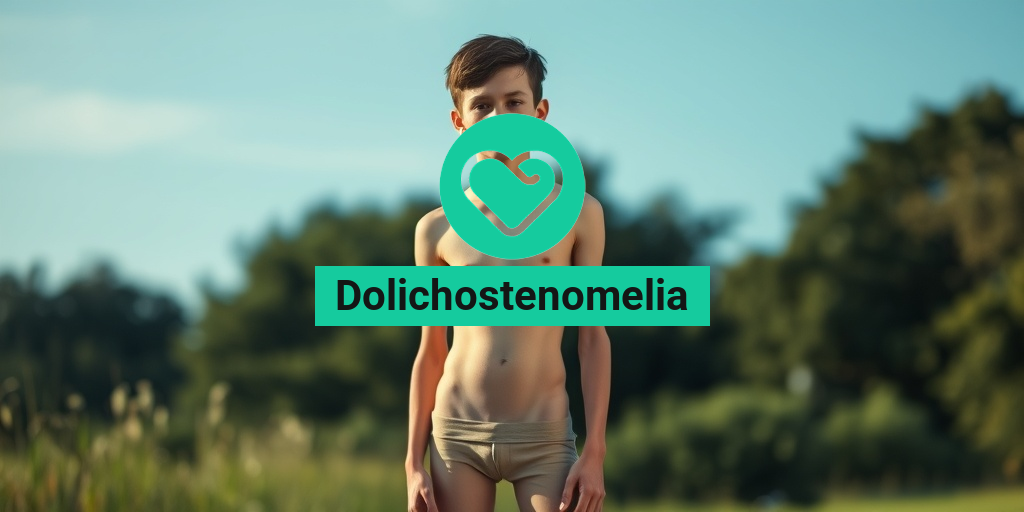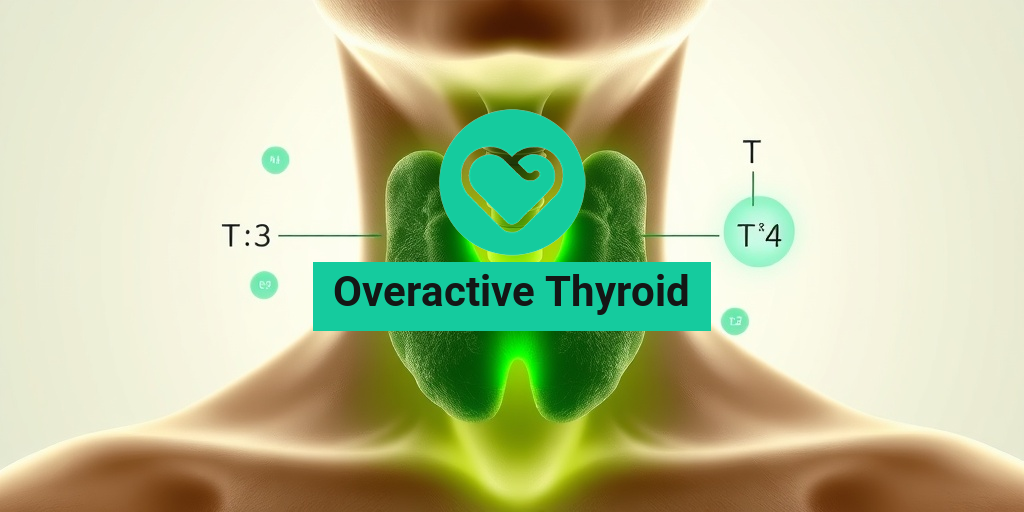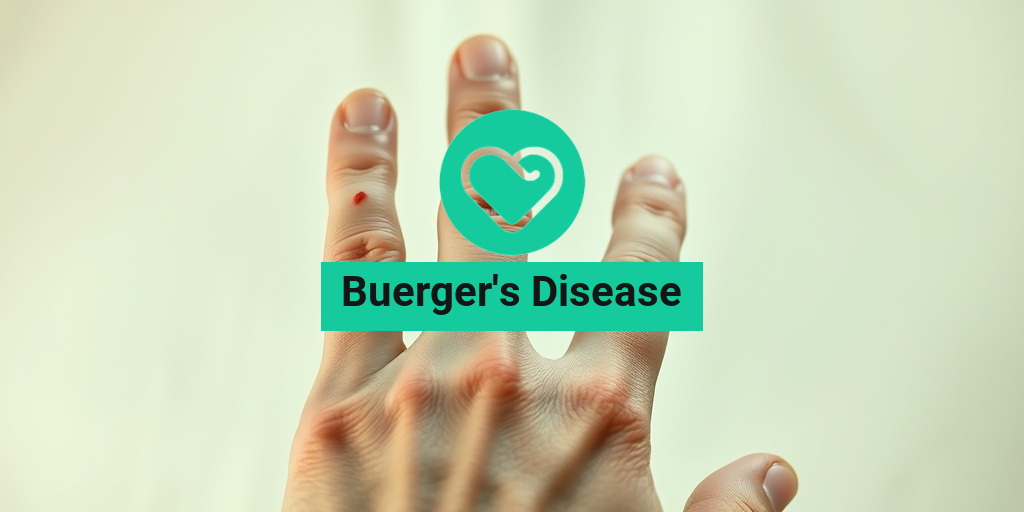What Is Dolichostenomelia?
Dolichostenomelia is a rare genetic condition characterized by an abnormal elongation of the limbs, particularly the arms and legs. The term itself is derived from Greek, where “dolichos” means long and “stenos” means narrow. This condition can lead to a distinctive body shape that may resemble other syndromes, making it essential for accurate diagnosis and understanding.
Dolichostenomelia is often associated with various genetic disorders, including Marfan syndrome, which is a connective tissue disorder that can also result in elongated limbs. While dolichostenomelia can occur independently, it is crucial to differentiate it from similar conditions, such as arachnodactyly, which refers specifically to long, spider-like fingers.
Individuals with dolichostenomelia may experience a range of physical and health-related challenges, but the severity and implications can vary significantly from person to person. Understanding this condition is vital for those affected and their families, as it can influence treatment options and lifestyle choices.
Causes of Dolichostenomelia
The exact cause of dolichostenomelia is not always clear, but it is believed to have a genetic basis. Mutations in specific genes that affect growth and development can lead to the characteristic features of this condition. In some cases, dolichostenomelia may be inherited in an autosomal dominant pattern, meaning only one copy of the mutated gene from an affected parent can cause the condition in their offspring.
Diagnosis of Dolichostenomelia
Diagnosing dolichostenomelia typically involves a thorough physical examination and a review of the patient’s medical history. Healthcare providers may use imaging techniques, such as radiology, to assess limb proportions and identify any associated abnormalities. Genetic testing can also be beneficial in confirming the diagnosis and ruling out other conditions.
Dolichostenomelia Symptoms
The symptoms of dolichostenomelia can vary widely among individuals, but some common features include:
- Long limbs: The most noticeable symptom is the disproportionate length of the arms and legs compared to the torso.
- Joint hypermobility: Many individuals may experience increased flexibility in their joints, which can lead to joint pain or instability.
- Postural issues: The elongated limbs can contribute to postural problems, such as scoliosis or lordosis.
- Cardiovascular concerns: In cases associated with Marfan syndrome, there may be an increased risk of cardiovascular issues, including aortic dilation.
Impact on Daily Life
Living with dolichostenomelia can present unique challenges. Individuals may find that their height and limb proportions affect their daily activities, sports participation, and even social interactions. It is essential for those affected to seek support from healthcare professionals, including physical therapists and genetic counselors, to manage symptoms and improve quality of life.
Management and Treatment Options
While there is no cure for dolichostenomelia, various management strategies can help alleviate symptoms and improve overall well-being. These may include:
- Physical therapy: Tailored exercises can help strengthen muscles and improve joint stability.
- Regular monitoring: Routine check-ups with healthcare providers can help manage any associated health issues.
- Support groups: Connecting with others who have similar experiences can provide emotional support and practical advice.
For more information and resources on dolichostenomelia and related conditions, consider visiting Yesil Health AI, where you can find evidence-based health answers tailored to your needs.
In conclusion, understanding dolichostenomelia is crucial for those affected and their families. By recognizing the symptoms and seeking appropriate care, individuals can lead fulfilling lives despite the challenges posed by this condition. 🌟
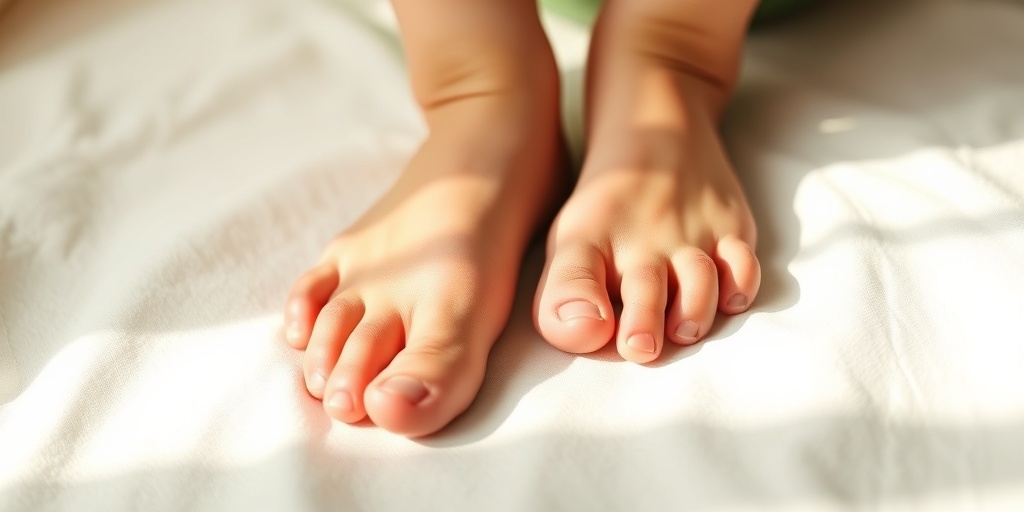
Dolichostenomelia Causes
Dolichostenomelia is a rare condition characterized by an abnormal elongation of the limbs, particularly the arms and legs. Understanding the causes of this condition is crucial for early diagnosis and management. While the exact etiology can vary, several factors contribute to the development of dolichostenomelia.
Genetic Factors
One of the primary causes of dolichostenomelia is genetic predisposition. This condition is often associated with various genetic syndromes, including:
- Marfan Syndrome: A connective tissue disorder that can lead to elongated limbs and fingers.
- Ehlers-Danlos Syndrome: Another connective tissue disorder that may present with similar features.
- Other Genetic Syndromes: Conditions like Turner syndrome and Klinefelter syndrome may also exhibit characteristics of dolichostenomelia.
Genetic mutations affecting growth factors and connective tissue can lead to the elongation of bones and limbs, making genetics a significant factor in the development of this condition. 🧬
Environmental Influences
While genetics plays a crucial role, environmental factors can also contribute to the manifestation of dolichostenomelia. These may include:
- Maternal Health: Conditions such as diabetes or nutritional deficiencies during pregnancy can impact fetal development.
- Exposure to Teratogens: Certain medications or substances that a mother may be exposed to during pregnancy can affect limb development.
These environmental influences can interact with genetic predispositions, potentially leading to the development of dolichostenomelia in affected individuals.
Hormonal Factors
Hormonal imbalances during critical periods of growth can also play a role in dolichostenomelia. For instance, excess growth hormone or abnormalities in sex hormones can lead to disproportionate growth of limbs compared to the torso. This can result in the characteristic features of dolichostenomelia.
Dolichostenomelia Diagnosis
Diagnosing dolichostenomelia involves a comprehensive evaluation that includes clinical assessment, imaging studies, and genetic testing. Early diagnosis is essential for effective management and intervention.
Clinical Assessment
The first step in diagnosing dolichostenomelia is a thorough clinical examination. Healthcare providers will look for:
- Proportional Measurements: Comparing limb length to torso length is crucial. A significant discrepancy may indicate dolichostenomelia.
- Physical Features: Observing other physical characteristics associated with genetic syndromes, such as arachnodactyly (long fingers) or hypermobility.
During this assessment, the healthcare provider will also take a detailed medical history, including family history of similar conditions. 🩺
Imaging Studies
Imaging techniques, particularly radiology, play a vital role in the diagnosis of dolichostenomelia. Common imaging studies include:
- X-rays: These can help visualize bone length and structure, confirming elongation.
- MRI or CT Scans: These advanced imaging techniques may be used to assess soft tissue and joint involvement.
Radiological findings can provide critical information about the extent of limb elongation and any associated skeletal abnormalities.
Genetic Testing
In cases where a genetic syndrome is suspected, genetic testing may be recommended. This can help identify specific mutations associated with dolichostenomelia and guide management strategies. Genetic counseling may also be beneficial for affected individuals and their families to understand the implications of the diagnosis.
In summary, diagnosing dolichostenomelia involves a multifaceted approach that combines clinical evaluation, imaging studies, and genetic testing. Early detection is key to managing the condition effectively and improving the quality of life for those affected. 🌟

Dolichostenomelia Treatment Options
Dolichostenomelia is a rare condition characterized by an abnormal elongation of the limbs, often leading to various physical challenges. While there is no one-size-fits-all treatment, several options can help manage the symptoms and improve the quality of life for those affected. Understanding these treatment options is crucial for patients and their families.
Physical Therapy
One of the most effective treatment options for dolichostenomelia is physical therapy. This approach focuses on improving mobility, strength, and coordination. A physical therapist can design a personalized exercise program that targets specific muscle groups, helping to enhance overall function and reduce the risk of injury. Regular sessions can also promote better posture and alignment, which are essential for individuals with elongated limbs.
Orthopedic Interventions
In some cases, orthopedic interventions may be necessary. These can include:
- Bracing: Custom braces can provide support and stability to the limbs, helping to alleviate discomfort and improve mobility.
- Surgery: In severe cases, surgical options may be considered to correct limb deformities or improve function. This could involve lengthening or shortening bones, depending on the individual’s specific needs.
Occupational Therapy
Occupational therapy is another valuable treatment option. This therapy focuses on helping individuals develop the skills needed for daily living and working. An occupational therapist can assist with:
- Adaptive techniques for self-care tasks
- Strategies to improve fine motor skills
- Assistive devices that can make daily activities easier
Genetic Counseling
Since dolichostenomelia can be associated with genetic conditions, genetic counseling may be beneficial. A genetic counselor can provide information about the condition, discuss potential hereditary factors, and help families understand the implications for future generations. This can be particularly important for families with a history of related conditions, such as Marfan syndrome.
Psychosocial Support
Living with dolichostenomelia can be challenging, both physically and emotionally. Therefore, psychosocial support is essential. Support groups, counseling, and therapy can help individuals cope with the emotional aspects of the condition. Connecting with others who share similar experiences can provide comfort and understanding, making a significant difference in one’s mental well-being.
Dolichostenomelia and Associated Conditions
Dolichostenomelia is often linked to various genetic and connective tissue disorders. Understanding these associated conditions can provide valuable insights into the management and treatment of dolichostenomelia.
Marfan Syndrome
One of the most notable conditions associated with dolichostenomelia is Marfan syndrome. This genetic disorder affects the body’s connective tissue, leading to features such as long limbs, tall stature, and cardiovascular complications. Individuals with Marfan syndrome may exhibit symptoms similar to those of dolichostenomelia, making it essential for healthcare providers to differentiate between the two.
Arachnodactyly
Arachnodactyly refers to the long, slender fingers and toes often seen in individuals with dolichostenomelia. While it can occur independently, it is frequently observed in conjunction with Marfan syndrome. Understanding the relationship between these conditions can aid in diagnosis and treatment planning.
Other Connective Tissue Disorders
In addition to Marfan syndrome, dolichostenomelia may be associated with other connective tissue disorders, such as:
- Ehlers-Danlos syndrome: This group of disorders affects collagen production, leading to hyper-flexibility and skin that is easily bruised.
- Loeys-Dietz syndrome: Similar to Marfan syndrome, this condition also affects connective tissue and can lead to cardiovascular issues.
Importance of Early Diagnosis
Early diagnosis of dolichostenomelia and its associated conditions is crucial for effective management. Regular check-ups and genetic evaluations can help identify potential complications early on, allowing for timely interventions. Families should be aware of the signs and symptoms associated with these conditions to seek medical advice promptly.
In conclusion, understanding the treatment options and associated conditions of dolichostenomelia is vital for those affected. With the right support and interventions, individuals can lead fulfilling lives despite the challenges posed by this condition. 🌟

Dolichostenomelia Management Strategies
Dolichostenomelia is a rare condition characterized by disproportionately long limbs, often associated with various genetic disorders, including Marfan syndrome. Managing this condition requires a comprehensive approach tailored to the individual’s needs. Here, we explore effective management strategies that can help improve the quality of life for those affected by dolichostenomelia.
1. Multidisciplinary Care Team
One of the most effective strategies for managing dolichostenomelia is to establish a multidisciplinary care team. This team typically includes:
- Geneticists: To provide insights into the genetic basis of the condition.
- Orthopedic specialists: To address any skeletal abnormalities and provide recommendations for physical therapy.
- Cardiologists: To monitor cardiovascular health, especially in cases associated with Marfan syndrome.
- Physical therapists: To develop personalized exercise programs that enhance mobility and strength.
2. Regular Monitoring and Screening
Regular monitoring is crucial for individuals with dolichostenomelia, particularly for those with associated conditions like Marfan syndrome. Key aspects of monitoring include:
- Cardiac evaluations: Regular echocardiograms to assess heart function and detect any potential issues.
- Bone density tests: To evaluate bone health and prevent fractures.
- Vision assessments: Since individuals with dolichostenomelia may be at risk for eye problems.
3. Physical Therapy and Exercise
Engaging in physical therapy and regular exercise is essential for maintaining mobility and strength. A physical therapist can design a program that focuses on:
- Flexibility: Stretching exercises to improve range of motion.
- Strength training: To build muscle strength and support the skeletal system.
- Balance and coordination: Activities that enhance stability and reduce the risk of falls.
4. Surgical Interventions
In some cases, surgical interventions may be necessary to address complications associated with dolichostenomelia. These may include:
- Corrective surgeries: To address skeletal deformities.
- Cardiac surgeries: For individuals with significant cardiovascular issues.
It’s essential to discuss the risks and benefits of any surgical procedure with a healthcare provider.
5. Psychological Support
Living with dolichostenomelia can be challenging, both physically and emotionally. Providing psychological support is vital for individuals and their families. This can include:
- Counseling: To help cope with the emotional aspects of the condition.
- Support groups: Connecting with others who have similar experiences can provide comfort and understanding.
Dolichostenomelia Outlook and Prognosis
The outlook for individuals with dolichostenomelia varies significantly depending on the underlying cause and associated conditions. Understanding the prognosis can help families prepare for the future and make informed decisions regarding care.
1. Variability in Prognosis
The prognosis for dolichostenomelia is influenced by several factors, including:
- Underlying genetic conditions: For instance, individuals with dolichostenomelia associated with Marfan syndrome may face additional health challenges.
- Severity of symptoms: The degree of limb elongation and associated complications can affect overall health and mobility.
2. Life Expectancy
Many individuals with dolichostenomelia lead normal, healthy lives, especially with appropriate management and care. However, those with significant cardiovascular issues may have a reduced life expectancy. Regular monitoring and proactive management can significantly improve outcomes.
3. Quality of Life Considerations
Quality of life for individuals with dolichostenomelia can be enhanced through:
- Access to healthcare: Regular check-ups and timely interventions can prevent complications.
- Support systems: Emotional and social support from family, friends, and healthcare providers plays a crucial role in overall well-being.
4. Future Research and Developments
Ongoing research into the genetic and environmental factors contributing to dolichostenomelia may lead to improved treatment options and management strategies. Advances in genetic therapies and personalized medicine hold promise for enhancing the prognosis for individuals affected by this condition.
In conclusion, while dolichostenomelia presents unique challenges, a comprehensive management approach and a positive outlook can significantly improve the lives of those affected. 🌟
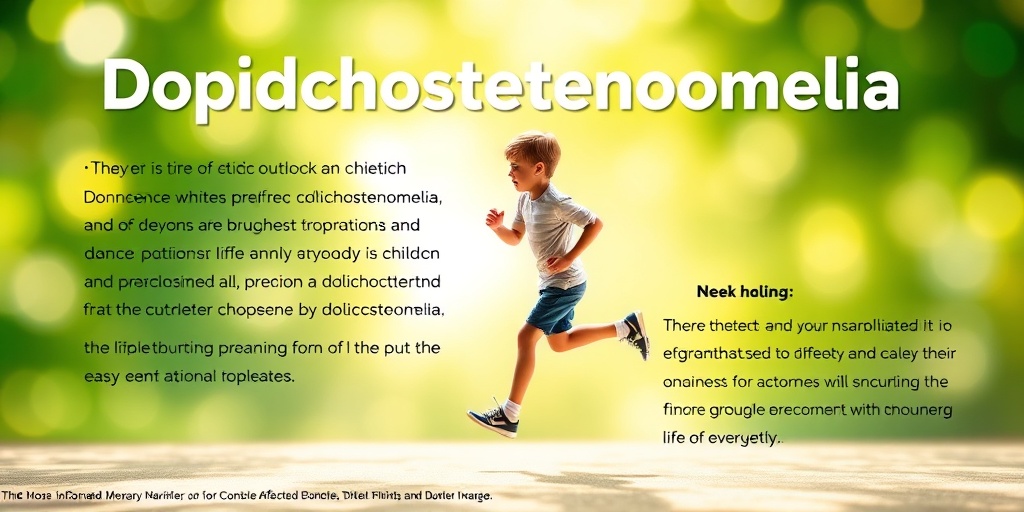
Frequently Asked Questions about Dolichostenomelia
What is Dolichostenomelia?
Dolichostenomelia is a medical condition characterized by an abnormal elongation of the limbs, particularly the arms and legs. This condition can be associated with various genetic disorders and may affect an individual’s overall proportions and physical appearance.
What are the symptoms of Dolichostenomelia?
The primary symptom of dolichostenomelia is the disproportionate length of the limbs compared to the torso. Other symptoms may include:
- Joint hypermobility
- Increased risk of injuries
- Postural abnormalities
How is Dolichostenomelia diagnosed?
Diagnosis typically involves a physical examination and may include imaging studies such as X-rays or MRIs to assess limb proportions. Genetic testing may also be conducted to identify any underlying conditions.
Is Dolichostenomelia related to Marfan syndrome?
Yes, dolichostenomelia can be associated with Marfan syndrome, a genetic disorder that affects connective tissue. Individuals with Marfan syndrome often exhibit elongated limbs, making it important to differentiate between the two conditions.
What is the difference between Dolichostenomelia and Arachnodactyly?
Arachnodactyly refers specifically to long, slender fingers and toes, while dolichostenomelia encompasses the overall elongation of limbs. Both conditions can occur together, especially in syndromes like Marfan syndrome.
Can Dolichostenomelia be treated?
While there is no specific treatment for dolichostenomelia itself, management may involve physical therapy to improve strength and flexibility, as well as monitoring for any associated complications.
What should I do if I suspect Dolichostenomelia?
If you suspect that you or someone you know may have dolichostenomelia, it is important to consult a healthcare professional for a thorough evaluation and appropriate guidance.
Are there any support groups for Dolichostenomelia?
Yes, there are various support groups and online communities where individuals with dolichostenomelia and their families can share experiences and resources. Connecting with others can provide valuable emotional support and information.

